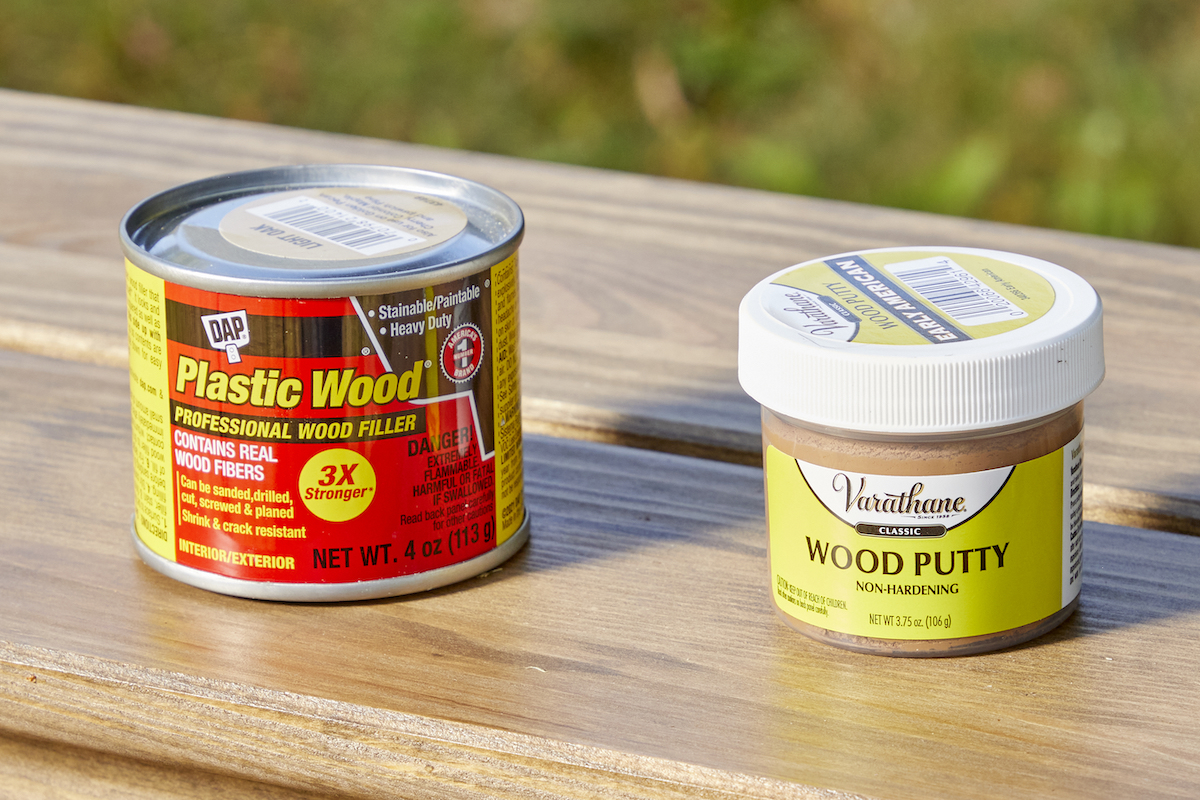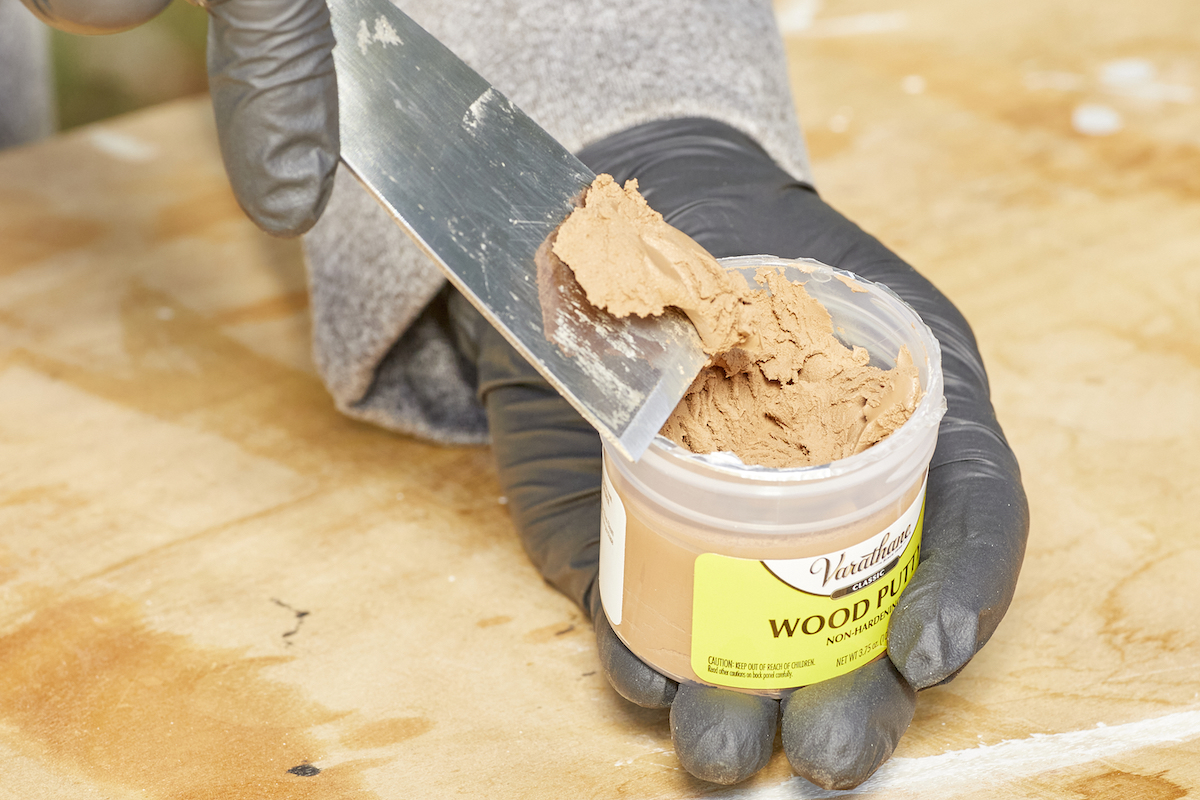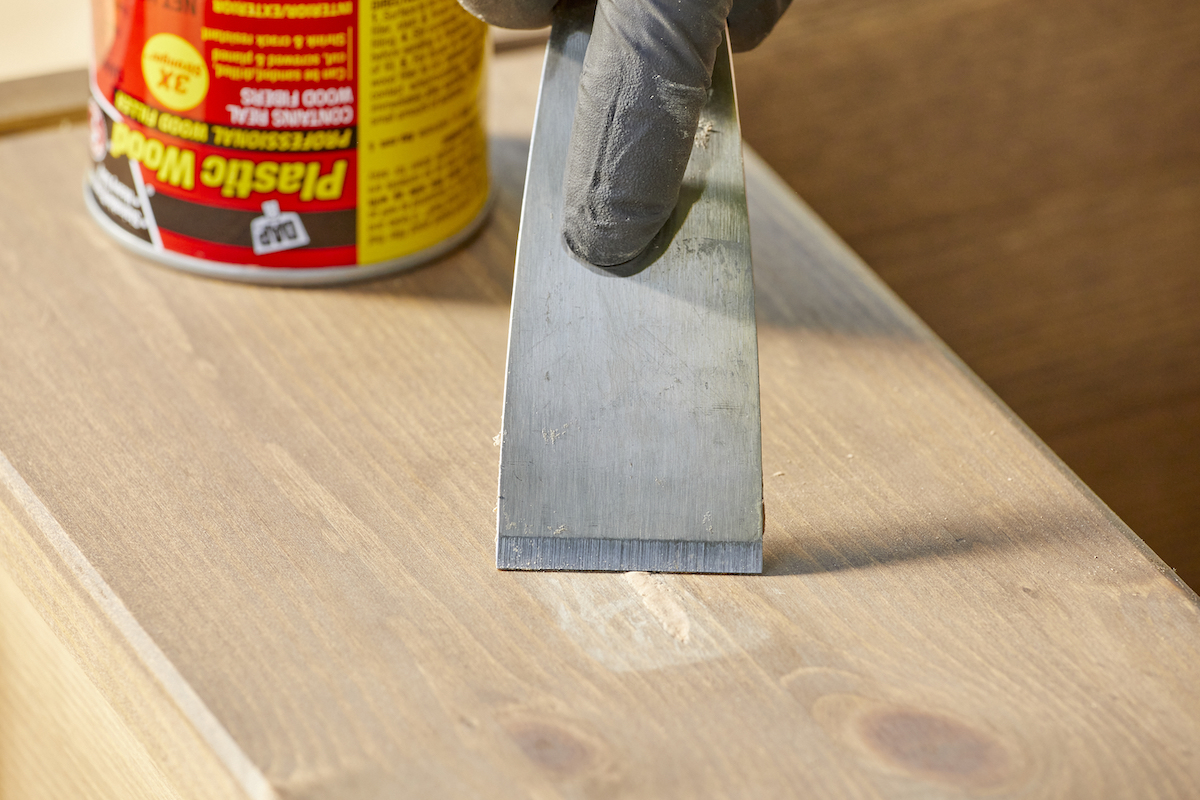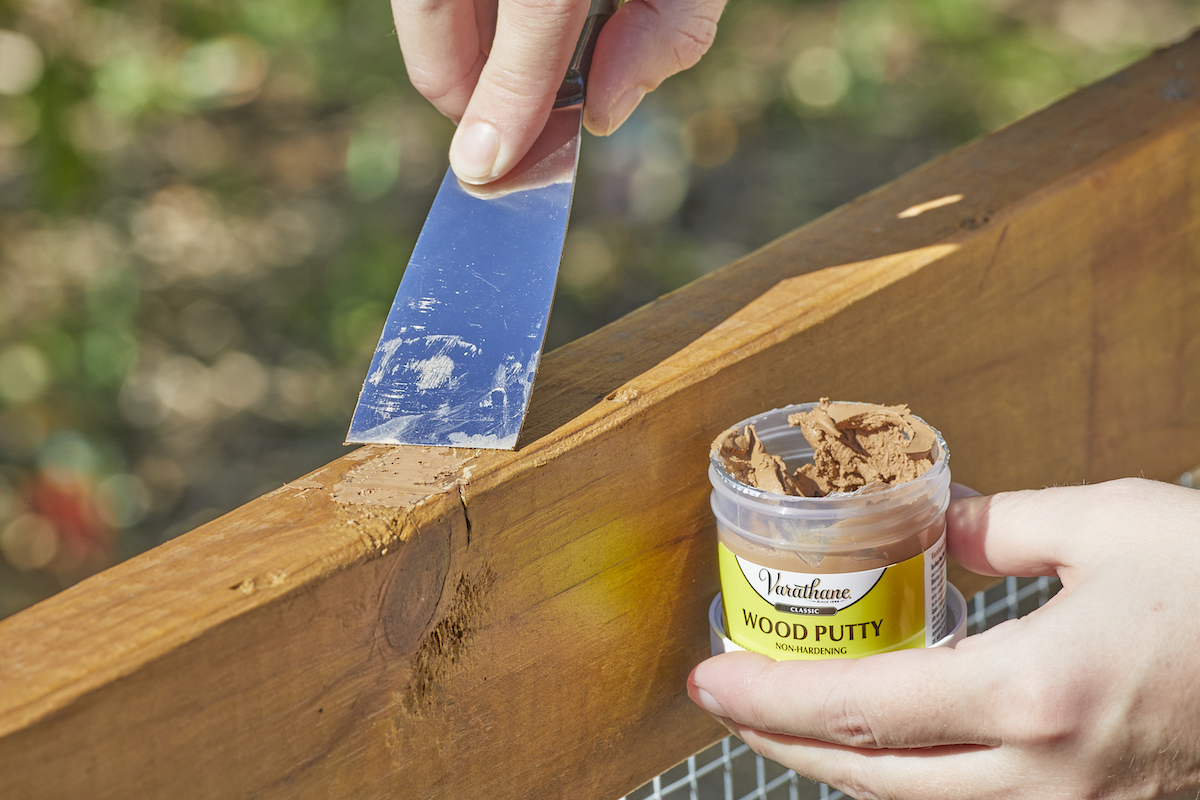

We may earn revenue from the products available on this page and participate in affiliate programs. Learn More ›
Whether repairing fine wooden furniture or filling nail holes in the wall, it’s likely that either wood putty or wood filler can help fix minor damages and improve the appearance of the project. Due to the similar purpose, these two products are often used interchangeably. However, when it comes to wood putty vs. wood filler, it’s important to know which situations are better suited for putty and when a filler is an ideal option.
Both wood putty and wood filler do the job of a wood hole filler, but there are limitations to both. Putty should only be used on finished or stained surfaces because the chemicals that are part of its composition can be harmful to exposed wood. Meanwhile, a stainable wood filler is not suitable for fixing exterior damage because filler is prone to shrinking and expanding with changing temperatures.
Keep reading to learn more about the differences between wood putty and wood filler, as well as when to use each product.
Wood filler is made of wood byproducts suspended in a binder that fully hardens in minutes.
The differences between wood putty and wood filler begin with the composition of each product. Wood filler is made up of a hardening resin solution that contains a suspension of wood byproducts. The formula allows it to take a soft and pliable form that’s relatively easy to apply. There are also kinds of liquid wood filler products that fill narrow cracks and slivers by soaking into the wood fibers and binding with them in order to repair the damage.
Once the wood filler is applied it will dry and harden within just a few minutes. Since it hardens and does not remain flexible, wood filler is an option for repairing damaged interior walls but not a good choice for exterior repairs. Filler can crack as it shrinks and expands in response to significant temperature changes.
While the chemical formula of wood putty can damage exposed wood, wood filler is made to bind directly to the natural wood and doesn’t need stain before application.
Our recommendation: Goodfilla Wood and Grain Filler—Get it at Amazon for $25.99
Patch holes inside the home with this quick-drying, paintable, stainable, and sandable wood and grain filler.
Wood putty consists of plastic-based and oil-based compounds that remain pliable for several hours.
Instead of using a suspension of wood byproducts in a binder, wood putty is made with plastic-based and oil-based compounds including boiled linseed oil, calcium carbonate, and universal colorants. Due to the chemicals in wood putty, it isn’t recommended to use putty on exposed raw wood. The chemicals can damage the wood, defeating the purpose of the repair. Instead, either stain before applying the wood putty to create a barrier between the chemicals and the wood or simply use wood putty on finished products that already have a wood sealant or stain applied.
Wood putty can take a long time to fully dry and set. Depending on the exact formula, as well as the humidity and size of the repair, wood putty may take as long as 72 hours to dry. Even after it dries, the putty remains flexible so it can be used for exterior repair jobs.
Our recommendation: Minwax Wood Putty—Get at Amazon for $7.58 and up, depending on shade
Repair stained and finished wood furniture in 10 color-matched options to popular Minwax wood stains.
Most wood fillers are stainable, whereas wood putties come in a variety of wood tones.

Is wood filler stainable is a common question asked by DIYers that are having difficulty color-matching wood putty. Due to the composition of wood filler, it can be mixed with a wood stain in various concentrations to customize the color of the filler. Typically, the best wood filler for stains contains a high amount of natural wood particles. Fillers that have a higher concentration of minerals may not hold stains as well. Paintable wood filler is also commonly available.
Wood putty is not stainable, but it does come in a range of wood colors. Choose the wood color that best matches the piece you are repairing. Outdoor wood putty is made to match popular stain colors for decks and fences. It also can be used inside or it can be painted over after it has fully cured.
When should wood filler be used?

Knowing the differences in the chemical composition and the various color options is key to deciding where, when, and how to use wood filler or wood putty. One of the first distinctions to keep in mind is that wood filler is prone to shrinking and cracking when it’s exposed to fluctuating temperatures, so it shouldn’t be used outdoors. However, since it takes just a few minutes for wood filler to harden, it is an excellent choice for quick interior repairs of nicks, holes, and scratches in hardwood flooring.
Repairing gouges and scratches in unfinished furniture is another great task for wood filler, but one of the most impressive uses of this product is repairing damaged edges on wood tabletops, countertops, and shelves. This repair stands out from minor nicks and scratches because you have to actually mold and shape the wood filler to match the surrounding undamaged edges of the furniture before the wood filler hardens. Once hardened, you can sand the wood filler to give it a smooth texture before staining.
When should wood putty be used?

Wood putty isn’t as popular as wood filler because it can take a long time to dry, but this perceived shortcoming actually makes wood putty an excellent option for outdoor work. Exterior wood putty can help repair holes in deck boards, fencing, and even siding without shrinking, expanding, or cracking due to temperature changes. After repairing gouges and cracks in exterior woodwork, wood putty can be painted to match the surrounding wood.
Inside a home, wood putty can repair cracks, chips, and small holes in finished furniture, flooring, and some interior woodwork. However, the more putty used for a repair, the longer it will take to fully set. It may be better to opt for a wood filler when it comes to larger interior repairs.
